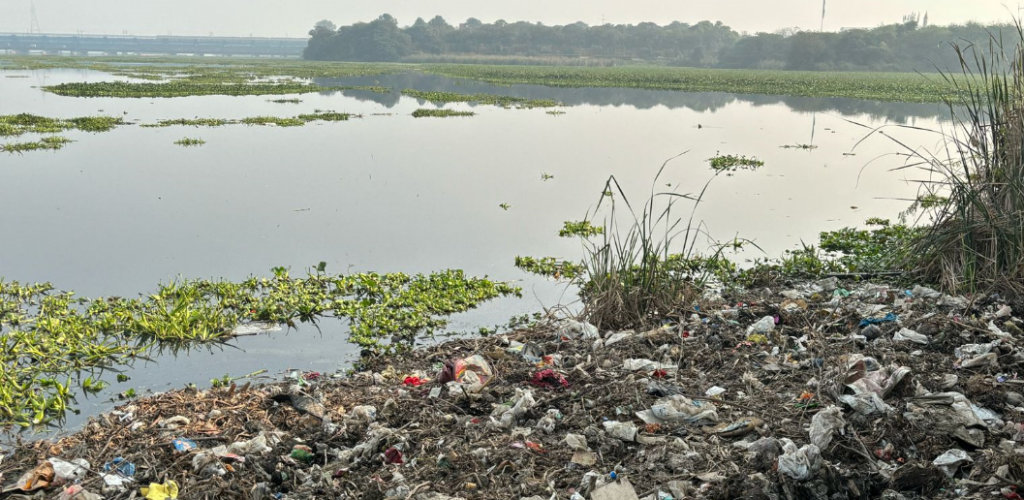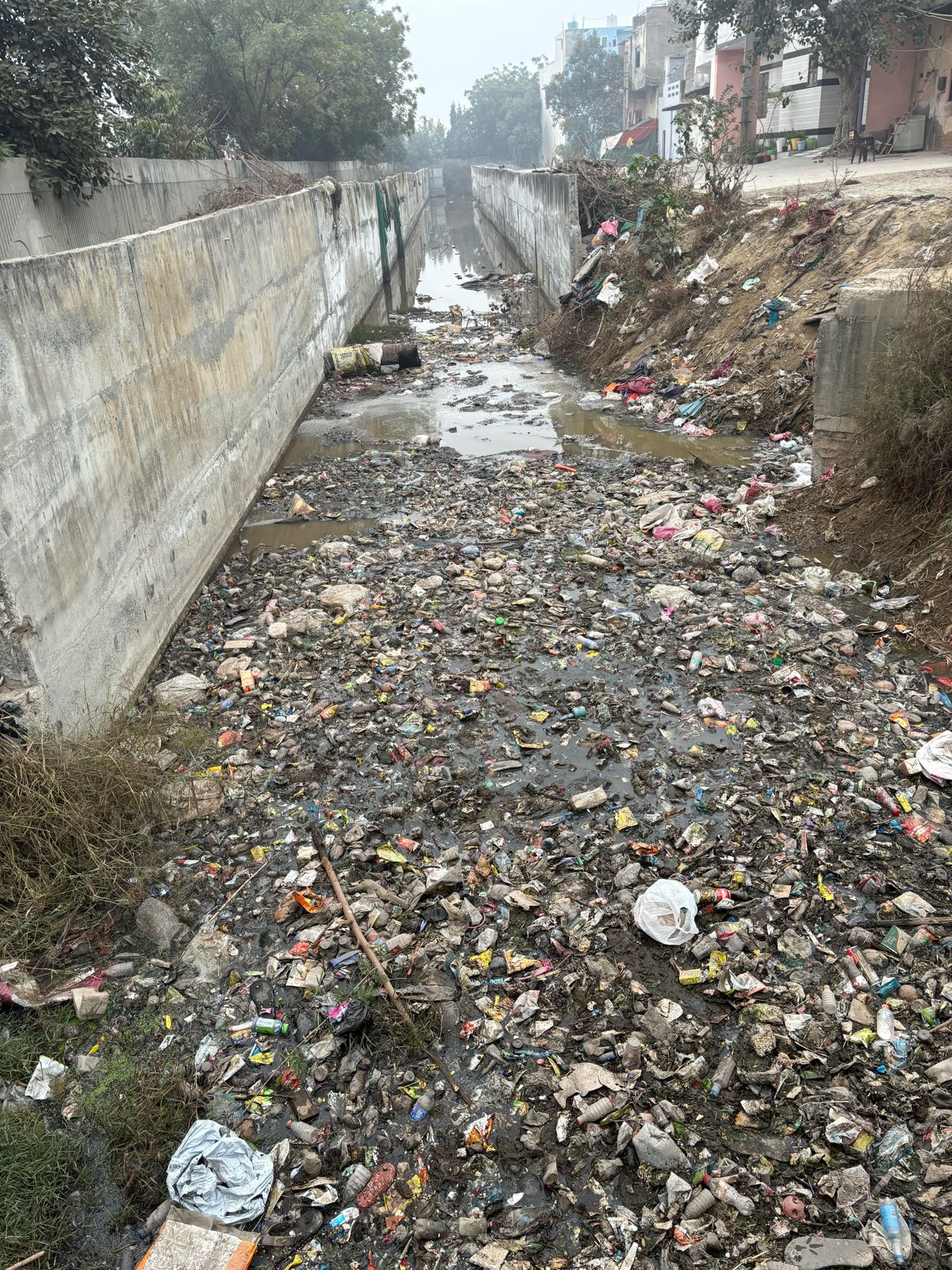Delhi | January 6, 2024
By Pratishtha Bagai
In one of Delhi’s unauthorised colonies in Rohini’s Budh Vihar, Savita Devi lives in a 200 square feet room on rent with her two children, husband, and mother-in-law. The lane outside her house is always flooded with sewage water, and during monsoons, it even enters her house. Last year in July, Devi’s toddler contracted typhoid as the faecal matter and domestic waste entered the house with dirty water. At that time, Devi and her husband, who together earn Rs.1200 a day from daily wages, spent nearly half of their monthly income on their son’s treatment. “I work on a daily wage, I couldn’t work and earn that month,” Devi said.
Savita Devi is not alone. According to state government data, more than six lakh people settled in nearly half of Delhi’s unauthorised colonies have no reprieve from living in such unhygienic conditions, as the state failed to include them into the capital’s sewage treatment network.
Last year, Delhi’s Health Minister Saurabh Bharadwaj announced that Delhi would be able to treat all the sewage it generates by the end of 2023 after sitting on this plan for four consecutive years.
The state planned to increase Delhi’s sewage treatment capacity by adding a new sewage treatment plant (STP) and upgrading 18 out of the 35 existing plants across the city. According to the government, this will increase the city’s sewage treatment capacity by almost 30% to 814 million gallons per day (mgd) to subsume the 768 mgd of sewage that Delhi generates every day. This, however, is taking time.
Delhi Jal Board’s (DJB) STPs are currently capable of treating 632 mgd of sewage waste. The new STP being constructed in Okhla will be India’s largest STP. Costing Rs.1161.18 crores, it will have the capacity to treat 124 mgd of sewage. Rehabilitation of four other STPs in Rithala, Coronation Pillar, Kondli, and Najafgarh areas of Delhi, costing over Rs.1310 crore cumulatively, is also still going on.
An email sent to the DJB dated January 4, 2024, enquiring about the reason for the delay in completion of these projects, went unanswered. However, Wabag, the private company holding the contract to upgrade some of these STPs, in an email reply, said, “The project experienced a slight delay in the construction phase, witnessing two phases of the COVID pandemic and forest clearance.”

STPs. | Photo Credits: Pratishtha Bagai
The chief medical officer at a state government hospital pointed out the health hazards of living in such colonies. “Typhoid infections, especially in children, are the most common of the cases we receive from these localities,” he said. “Besides typhoid, which reaches the body through the orofecal route and then causes fever, abdominal pain, and vomiting, the overflowing drains in these colonies become potential sources of the breeding site for mosquitoes spreading several diseases including dengue and malaria.” National Centre for Vector Borne Diseases Control data suggests that Delhi reports the most dengue cases amongst other union territories in India.
The stench, worm infestations, commuting problems, damage to electronics and walls due to moisture, and the financial burden of making arrangements for preventing sewage from entering their houses are other problems residents of these colonies face besides susceptibility to numerous health issues.
These colonies depend on septic tanks for disposal of their waste, which are connected to the 21 stormwater drains in Delhi, releasing the untreated sewage directly into Yamuna and making it prone to pollution. People living in slums, barrages, and villages close to the dirty drains are also equally affected.

Photo Credits: Pratishtha Bagai
Baldeo, a farmer in Dhansa, Delhi’s last village, grows mustard on the Haryana border. The drain that flows from his village to Najafgarh is the largest and dirtiest of Delhi’s stormwater drains. In the monsoon every year, the drain overflows, and the water breaks into the fields and destroys crops on at least three to four acres of their farmland, which the government does not compensate them for.
“Yamuna enters Delhi at Palla. Up to Palla, it sustains life. The moment it comes to Delhi and starts getting polluted, life dies out,” said Rajeev Suri, an environmental activist. “By the time it reaches the centre of Delhi, It’s a completely dead river.” The high biochemical oxygen demand (BOD) levels create a harmful ecosystem for the survival of fish and other aquatic life, he added.
Water samples collected at Palla were fit for outdoor bathing, whereas samples from other locations from Delhi did not meet the quality criteria for bathing, according to the Central Pollution Control Board’s latest annual report.

Photo Credits: Pratishtha Bagai
“The stormwater drains have to be used as stormwater drains. We have to stop using them for purposes of discharging septage,” said Suri. “The STP plants have not been completed because of a multitude of problems, we have to iron out all those problems and make sure that these STP plants are made operational at the earliest possible.”

